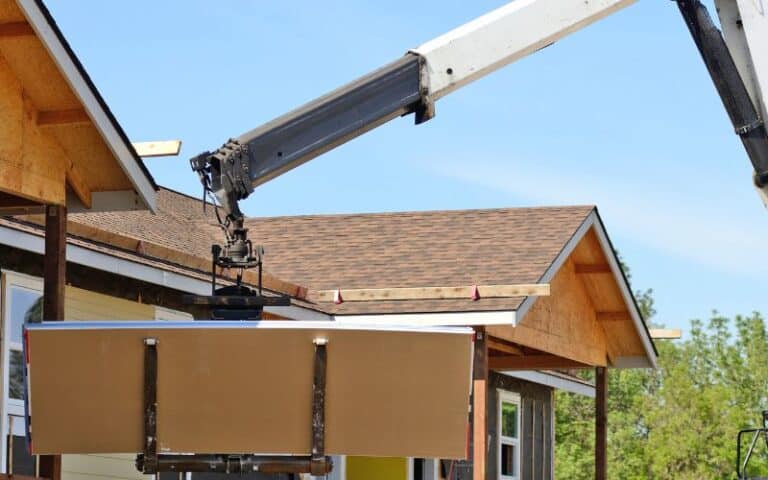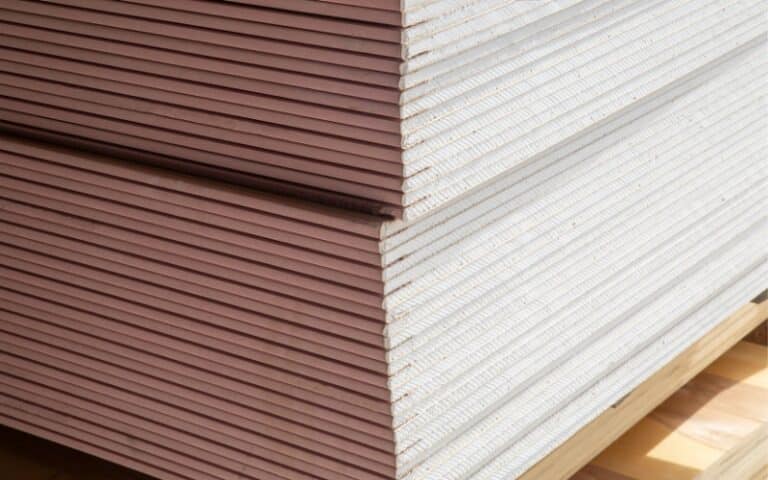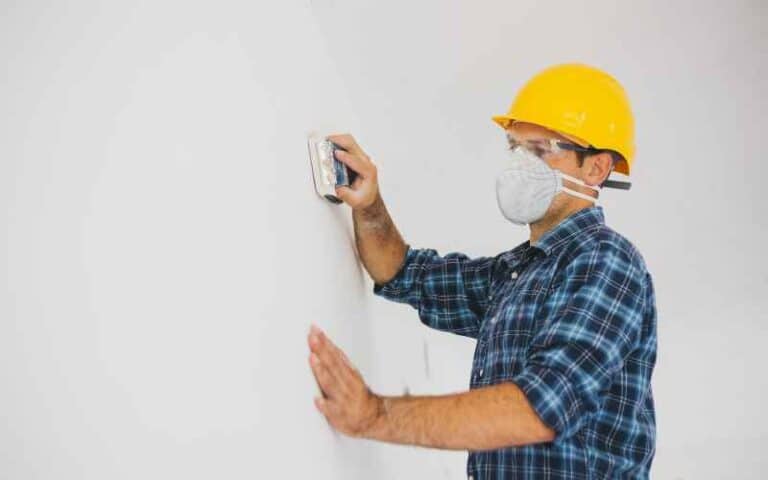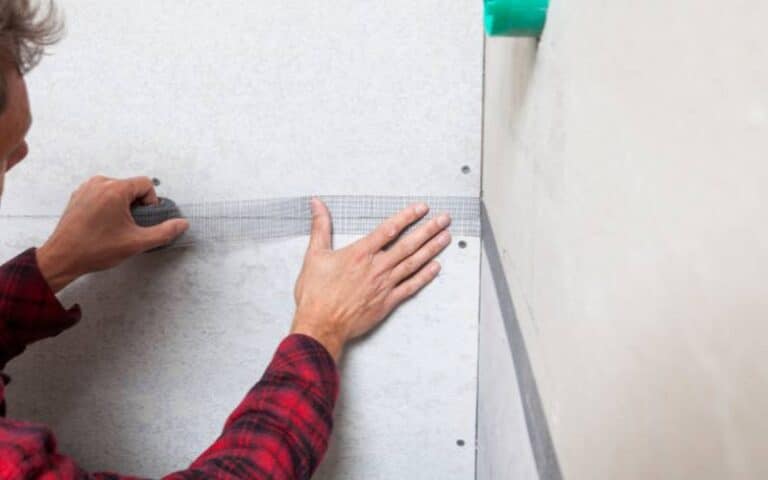When installing a new door, it is vital to consider the width of the door jamb. The door jamb is the vertical frame that surrounds the door and supports it when closed.
When installing a door jamb, one crucial factor is the thickness of the drywall you plan to install around it.
This article will discuss the appropriate door jamb width for ⅝-inch drywall and provide tips for ensuring a successful installation.
The standard door jamb width for ⅝-inch drywall is 4 9/16 inches. However, the exact width may vary depending on the manufacturer and the type of door jamb you use. Measuring carefully and consulting with the manufacturer are essential to ensure a proper fit.
This article will explore the factors to consider when determining the door jamb width for 5/8 drywall.
You will also discover if your door jamb should be flush with drywall and how to measure a flat jamb width.
Ready for a Drywall Quiz?
What Is a Standard Door Jamb Width for 5/8 Drywall?

The standard door jamb width for 5/8 drywall is typically 4 9/16 inches.
This measurement is based on the width of the door itself and should accommodate the thickness of the drywall.
When installing a door jamb on 5/8 drywall, properly shim the jamb and anchor it to the framing behind the drywall.
This process will help to ensure a secure and stable installation and prevent the door from sagging or binding over time.
It’s also worth noting that the standard door jamb width may vary depending on the specific type of door you are installing and the particular application.
For example, exterior doors may require a wider jamb to accommodate additional insulation and weatherstripping. Conversely, interior doors may use a narrower jamb to save space.
Ultimately, it’s important to carefully measure and plan your door installation to ensure the jamb is the correct width for your specific application.
Here is a table that shows the standard door jamb width for 5/8 drywall.
| Door Type | Standard Jamb Width for 5/8 Drywall |
|---|---|
| Interior Prehung Door | 4 9/16-inches |
| Interior Slab Door | 4 9/16-inches |
| Exterior Prehung Door | 5 ¼-inches |
| Exterior Slab Door | 5 ¼-inches |
However, you should note that this is just a general guide, and the actual jamb width may vary.
It’s always important to consult a professional installer to ensure you select the correct size jamb for your installation.
Factors That Determine the Door Jamb Width for 5/8 Drywall
When installing a door jamb for ⅝-inch drywall, several factors will determine the appropriate width of the jamb.
These factors include:
#1. Wall Thickness
The first factor to consider is the thickness of the wall. If the wall is a standard 2×4 wood frame wall, the total thickness of the wall, including the drywall, will be approximately 4 ⅝-inches.
If the wall is a 2×6 wood frame, the total thickness will be approximately 6 ⅝-inches.
#2. Door Thickness
The thickness of the door itself is also an important factor. Most standard interior doors are 1 ⅜-inches thick, but some may be thicker or thinner.
The jamb width will need to accommodate the door thickness.
#3. Hinge Size
The size and placement of the door hinges will also impact the jamb width. Standard door hinges are usually 3.5 inches in size, but you may also use larger or smaller hinges.
The hinge placement will also affect the width of the jamb.
#4. Trim Thickness
Finally, consider the thickness of any trim you add to the jamb.
If you plan to add decorative trim, such as casing or molding, the jamb width will need to be adjusted to accommodate the thickness of the trim.
It’s always a good idea to consult with a professional or reference a door jamb installation guide for specific instructions based on your unique situation.
Should Door Jamb Be Flush With Drywall?
Ideally, the door jamb should be flush with the drywall for a clean and professional finish.
Flushing helps ensure that the door operates smoothly and that there are no gaps or inconsistencies between the jamb and the wall.
When installing a new door, one common question is whether the jamb should flush with the drywall.
The short answer is that it depends on your personal preference and the style of your home. However, there are some factors to consider when making this decision.
Firstly, it’s important to note that a flush jamb provides a clean and modern look, which can be ideal if you’re going for a contemporary aesthetic.
It also makes it easier to install trim around the door, as the trim can be flush with the jamb and the drywall.
On the other hand, a jamb that protrudes slightly from the drywall can give a more traditional look to the room.
Moreover, it can also help to hide any imperfections or gaps between the jamb and the wall.
The jamb can be especially useful if your walls are uneven or you’re working with an older home that has settled over time. Another factor to consider is the thickness of your drywall.
If you’re working with thicker drywall, you should recess the jamb slightly, so the trim doesn’t stick out too far from the wall.
Conversely, if you’re working with thinner drywall, a flush jamb may be the better option to ensure a secure installation.
Ultimately, deciding whether to make the door jamb flush with the drywall depends on personal preference and the circumstances of your installation.
Regardless of your preference, it’s essential to take the time to ensure that you install the door jamb securely and level.
This installation may require shims to adjust the position of the jamb and fill in any gaps between the jamb and the drywall.
How Do I Measure a Flat Jamb Width?
When installing a door, one of the key measurements you’ll need to take is the width of the flat jamb.
The flat jamb is part of the door frame that runs parallel to the wall and provides a surface for the hinges to attach to.
Accurately measuring the flat jamb width is crucial to ensure a proper fit for the door and a secure installation.
You will need a few tools to measure the flat jamb width, including a tape measure, a level, and a pencil or marker.
Measuring a flat jamb width is a relatively straightforward process that requires only a few basic tools.
Here’s a step-by-step guide on how to do it:
- Start by removing any existing trim or molding around the door jamb. Removing the trims will give you a clear view of the jamb and make it easier to measure.
- Next, locate the widest part of the jamb. This part is typically the jamb section that runs parallel to the floor and is closest to the hinge side of the door.
- Measure the width of the jamb at its widest point using a tape measure or a digital caliper.
- Make sure to measure from the inside edge of the jamb, where it meets the door stop.
- Record the measurement in inches or centimeters, depending on your preference.
- Be sure to accurately write down the measurement when selecting new trim or molding.
- Repeat this process for each flat jam around the door frame, including the top and opposite jamb.
- Once you have measured all the flat jambs, you can use the measurements to select new trim or molding that fits the jamb properly.
When measuring a flat jamb width, it’s important to be as precise as possible to ensure the new trim fits snugly against the jamb.
If the measurement is off by even an inch, it can result in gaps that can detract from the overall look of the door.






